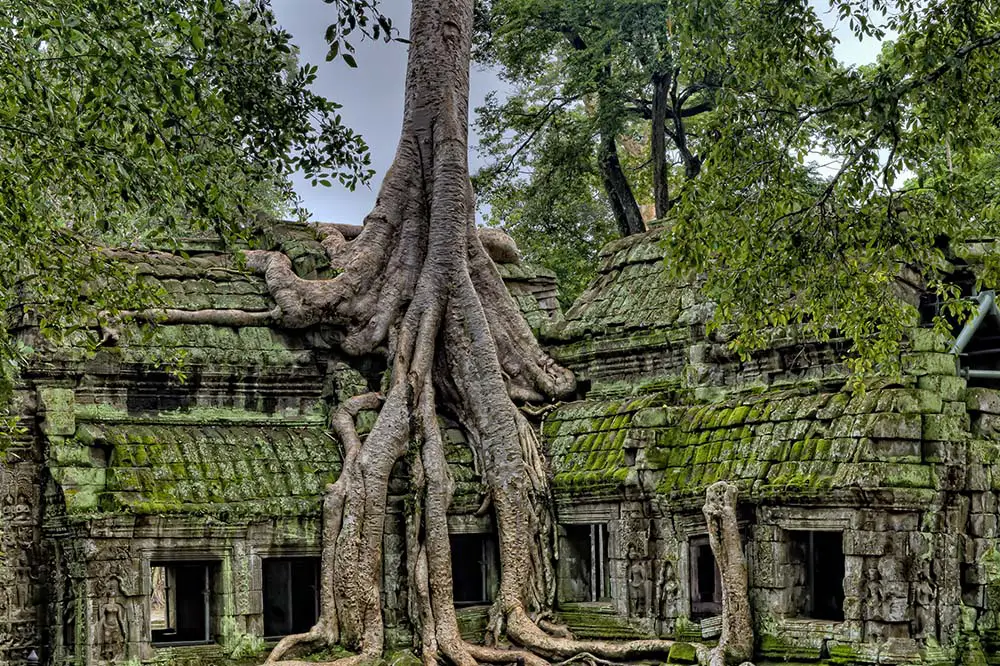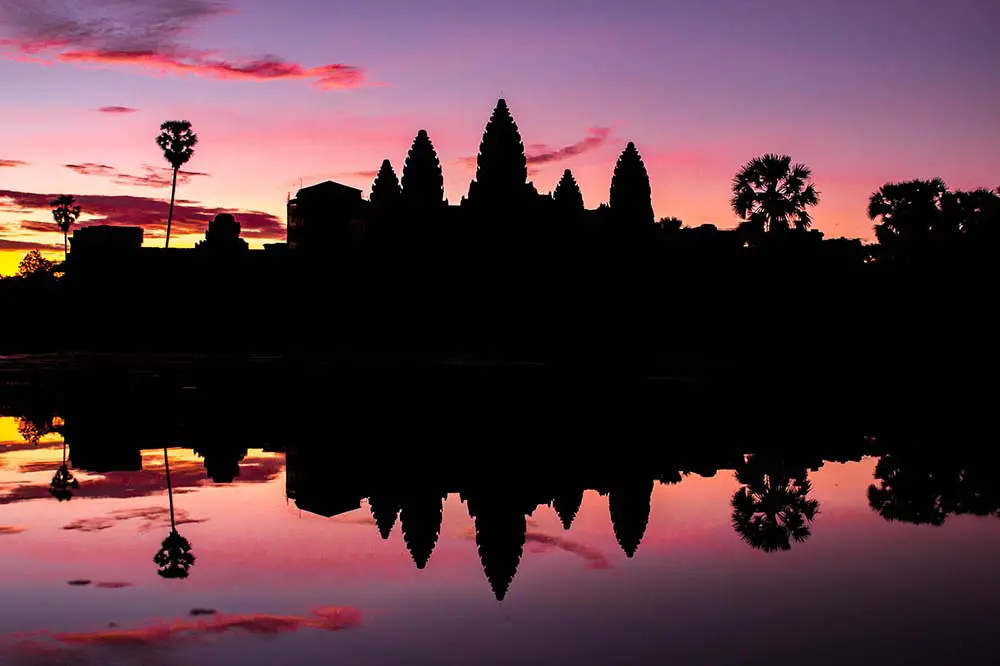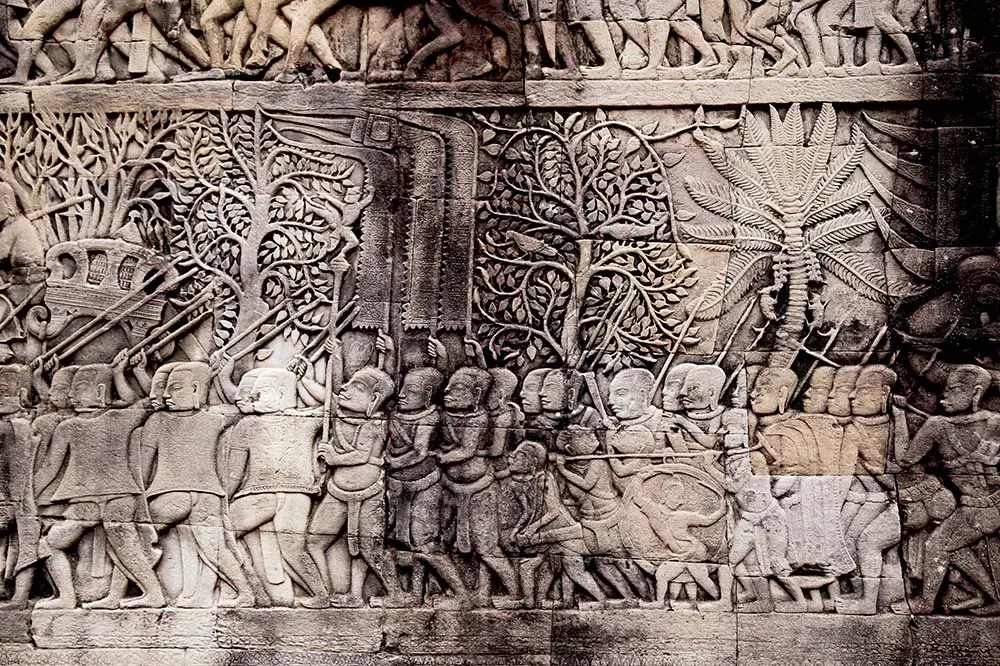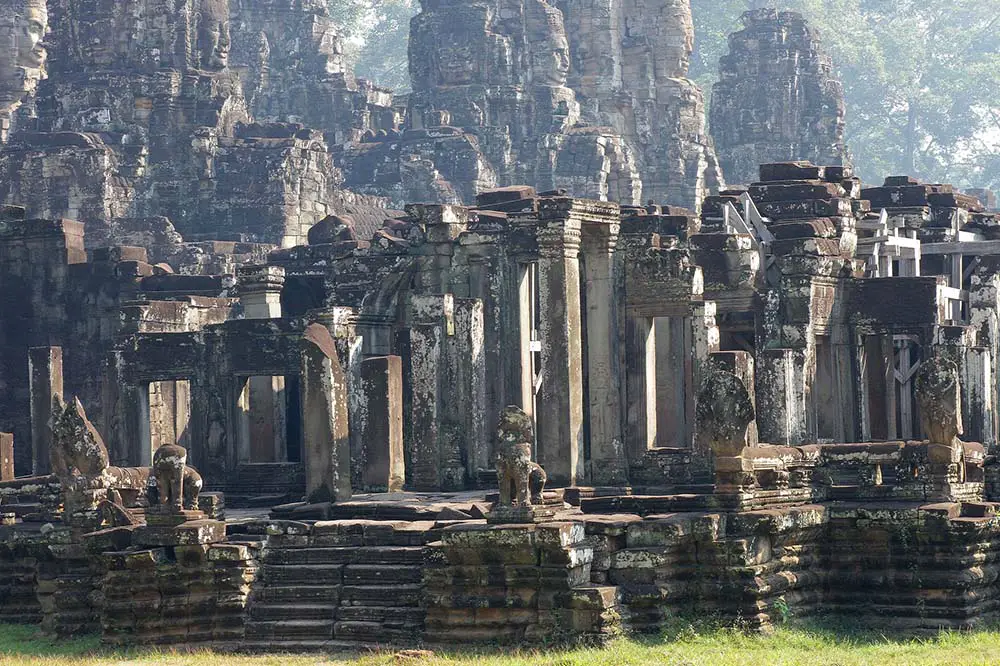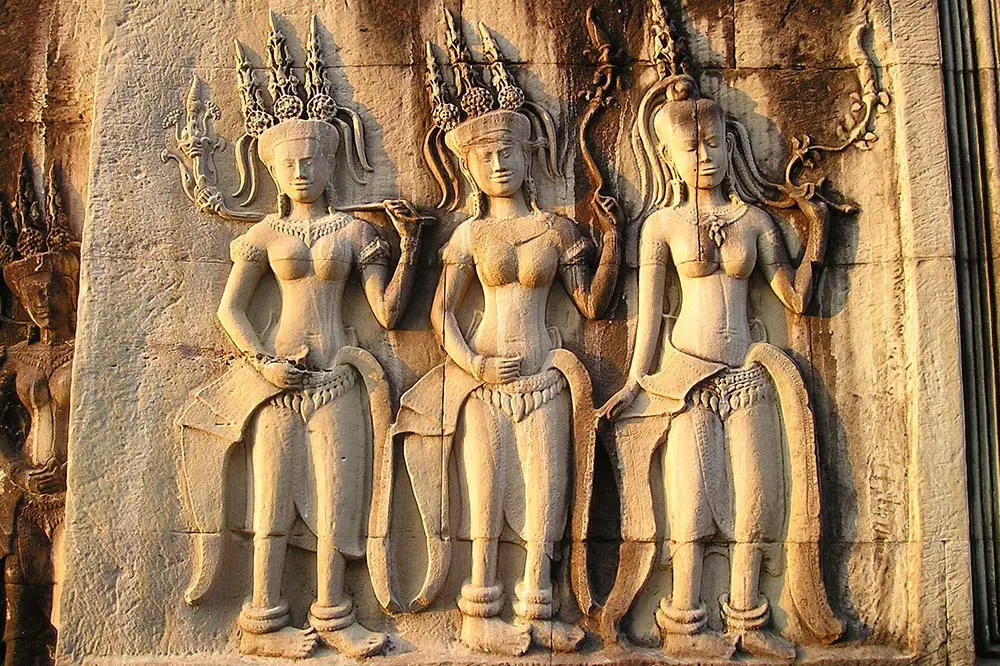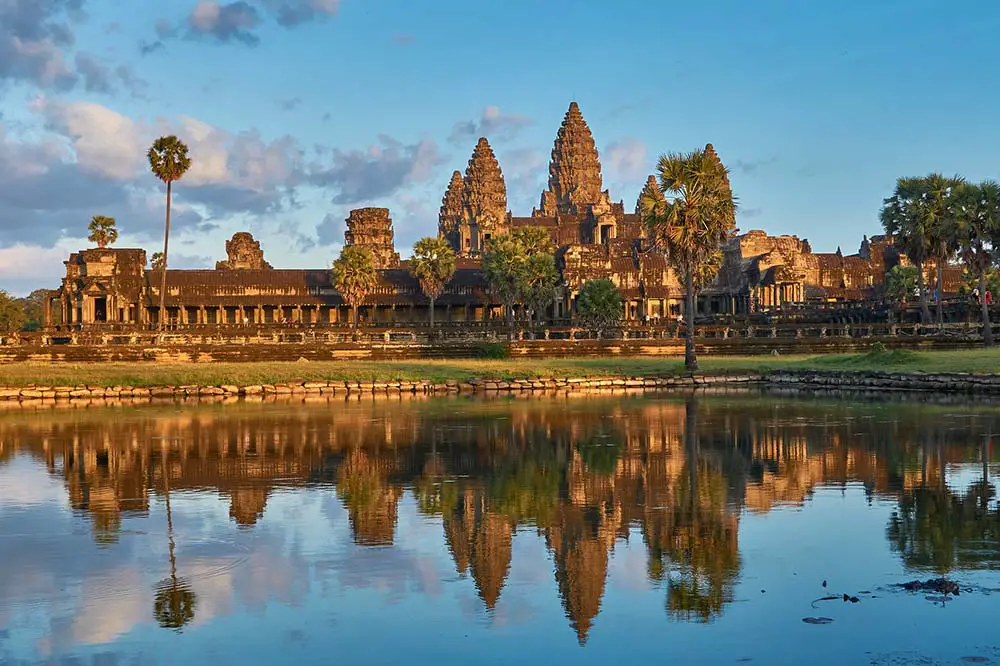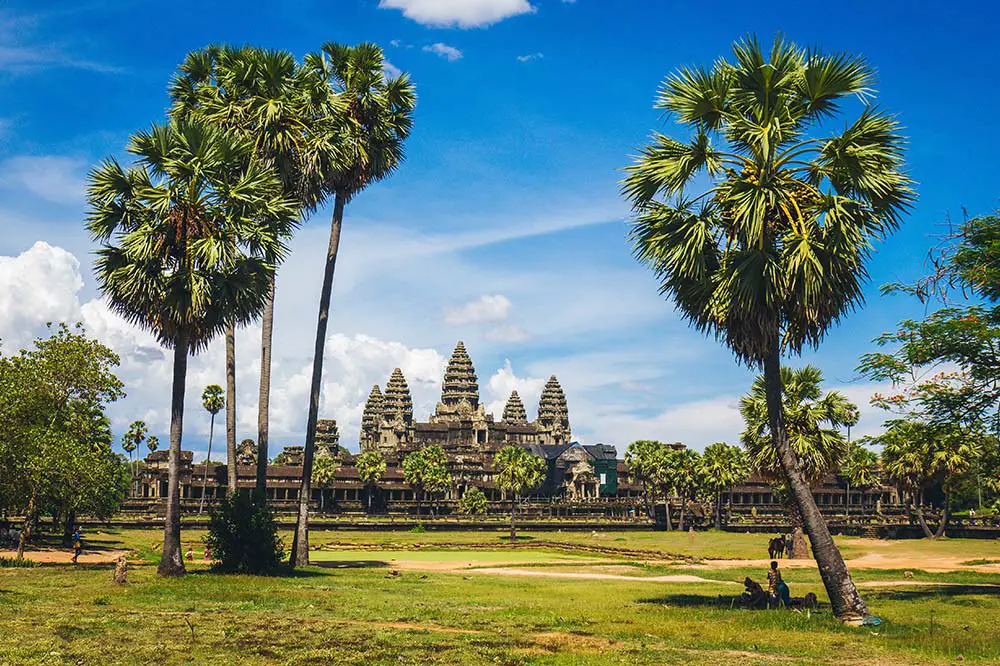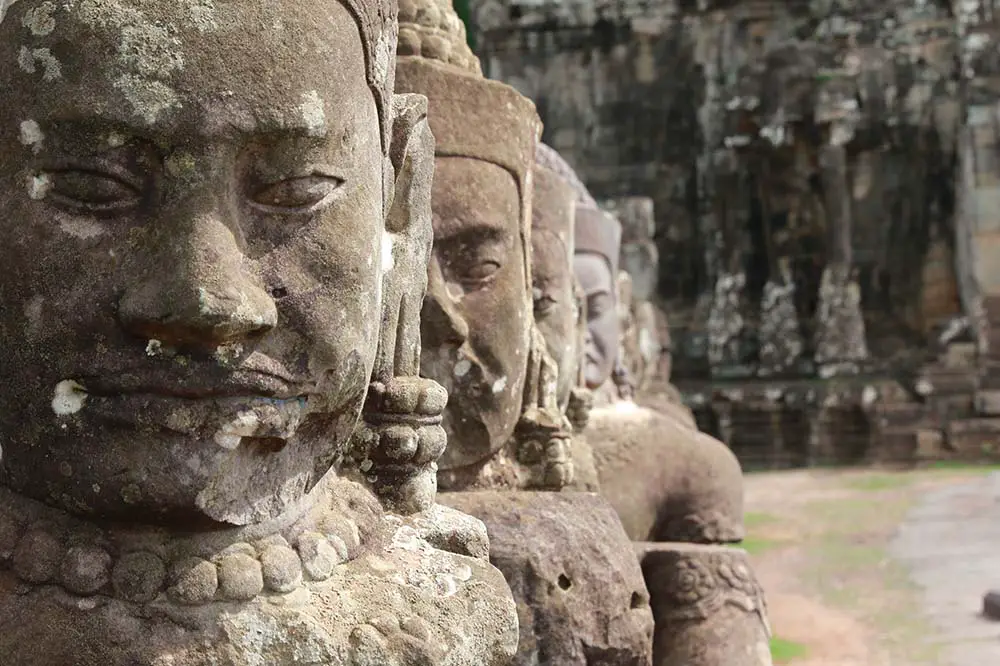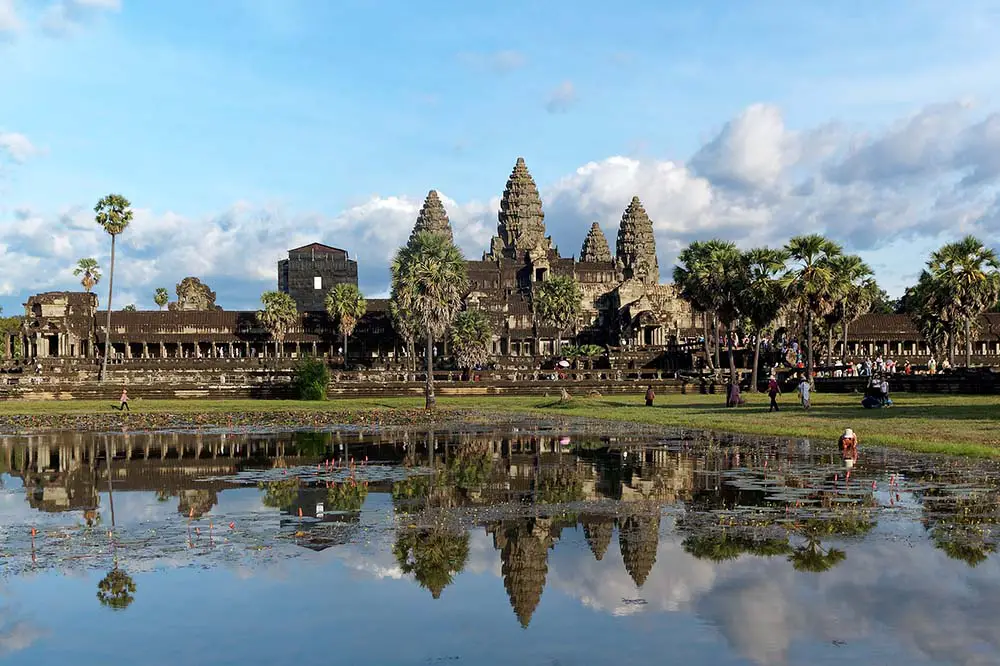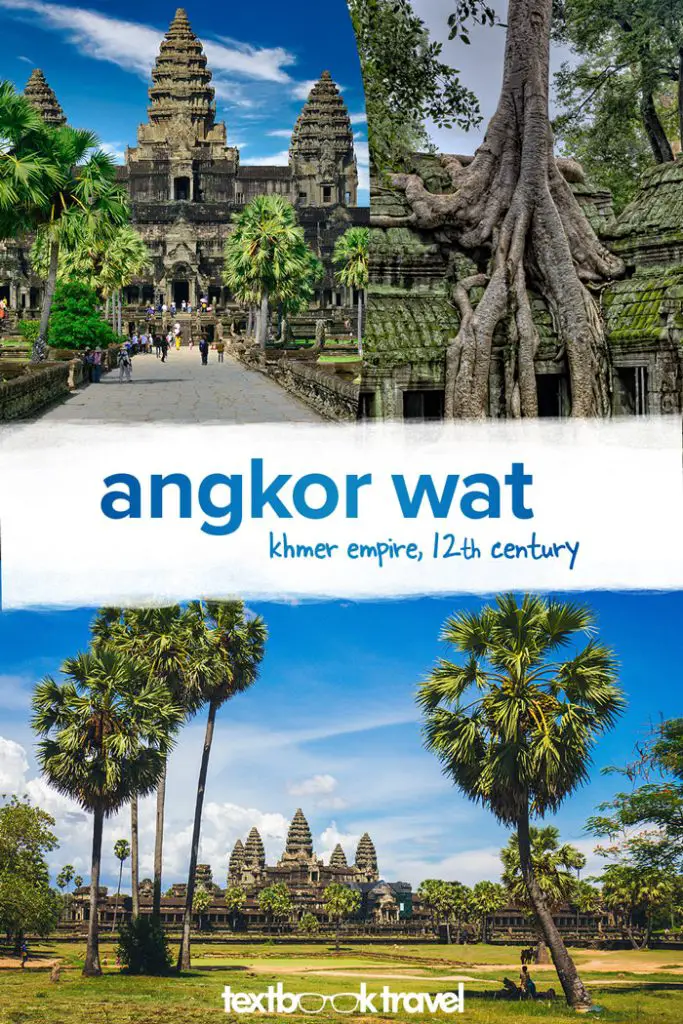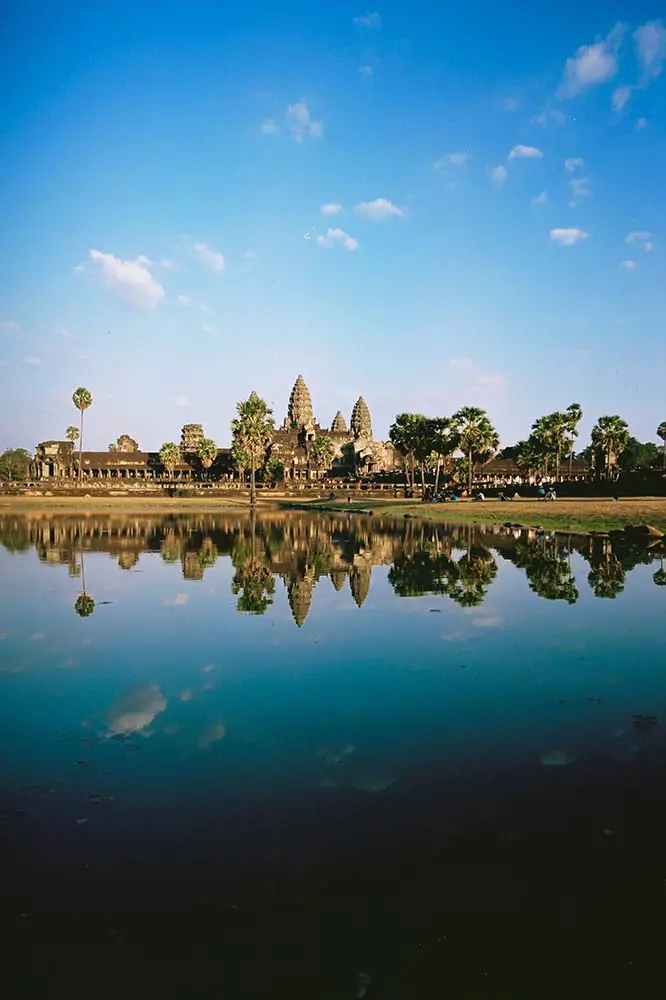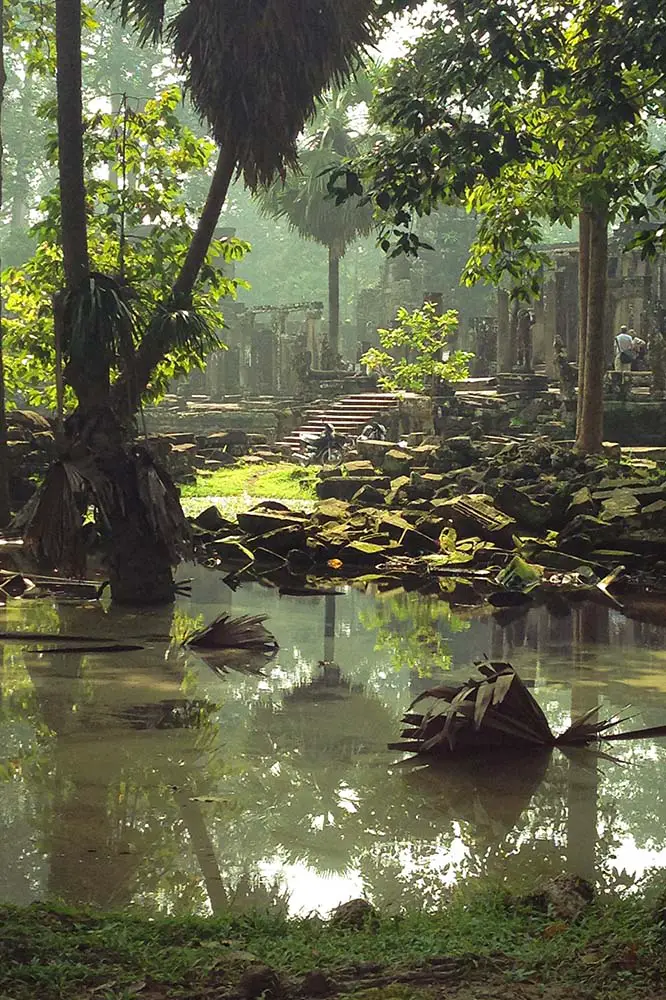Angkor Wat | Khmer Empire, 12th Century
After a succession of kingdoms that ruled from the turn of the first millennium AD to 800 AD, the Hindu/Buddhist Khmer Empire was formed and lasted for roughly 6 centuries. The Khmer architectural style is quite unique and is supposed to represent Mount Meru, a five peaked mountain, which is home to the Hindu and Buddhist gods and the centre of the universe.
Left: Bernd Schray from Pixabay & Right: Jakub on WikiCommons
Meaning “city of temples”, Angkor Wat is the largest religious monument in the world, stretching over 400 acres across the countryside of north-western Cambodia. The temple complex was originally dedicated to one of the principal Hindu deities, Vishnu in the early 12th century but was eventually converted into a Buddhist temple towards the end of the century. The complex is made up of a central temple and a series of walls and moats that stretch as far as the eye can see.
Excuse me! Are you on Pinterest?! Here are a couple of pins! Right: George Bakos on Unsplash
Gallery
This post is part of an expanded series taken from 37 Wonders of the World in Chronological Order. You can click the link to read more, watch the video or navigate between individual posts beneath the gallery. Enjoy!
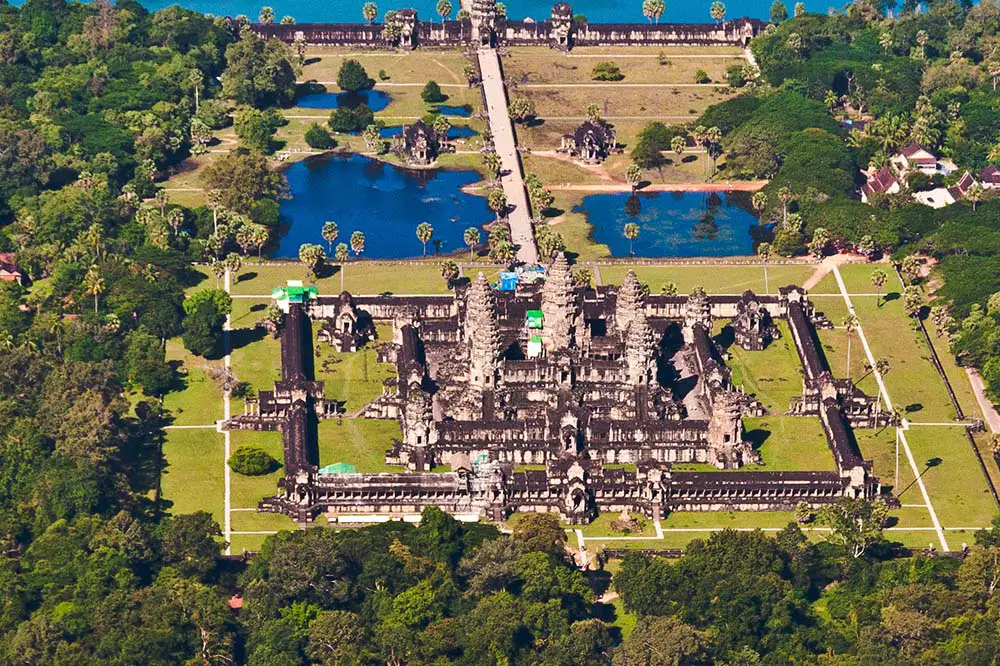
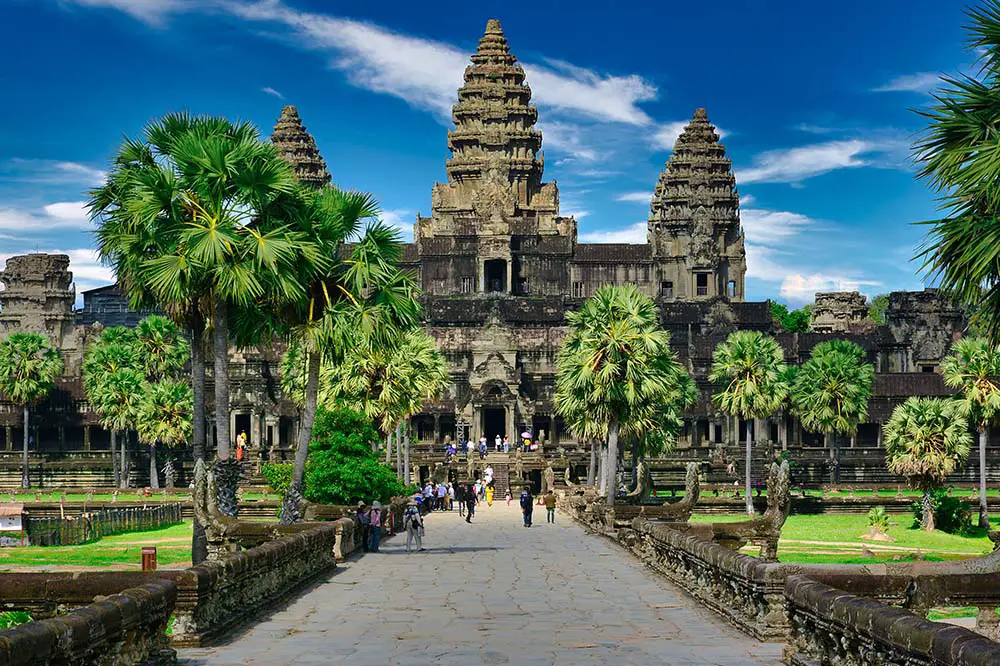
Left: Anne Nicole on Unsplash & Right: Melody Temple on Unsplash
